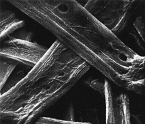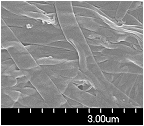Questions or Comments, e-mail our webmaster
Sigma Xi Canada :: Sigma Xi international :: American Scientist magazine
Last update: November 27th 2009

Questions or Comments, e-mail our webmaster
Sigma Xi Canada :: Sigma Xi international :: American Scientist magazine
Last update: November 27th 2009

December 2009

Dr. Theo Van de Ven from McGill University
Industrial Research Chair in "Colloid and Papermaking Chemistry"
Monday,14 December 2009, 6:00 P.M.
McGill University
Otto Maass Building, Room OM-10
Paper is a network of wood fibers, held together by hydrogen bonding and van der Waals attraction at fiber crossings, the nodes of the network. When the network is made during papermaking, the space between the fibers is filled with water, which is replaced by air during drying. When rewetting paper, the air is replaced by water. Structural changes in the network occur as a result of drying or rewetting. The strength of wet paper is important in papermaking, as the wet paper is weak and prone to break, each break resulting in a considerable loss of production, and it is important for various end uses, such as for wiping and tissue papers, which have to remain strong upon rewetting. Like paper, films made of nanotubes, nanorods, nanofibers or nanoribbons also consist of randomly oriented fibers, and may well benefit from a better understanding of paper properties.


Fiber crossings in paper (left) and films made of PEI/SMA nanofibers (right).
Trying to understand the strength of wet paper leads you into the wonderful world of Laplace pressures and other capillary forces, fiber elasticity and flexibility, Amontons law, friction, entanglements, hollow fibers, fiber collapse, pit holes, fibrils and other strange things. Important are the forces that are operating at fiber crossings and which are still poorly understood. Adding chemicals and colloidal particles (fillers) to the paper, a common practise in papermaking, complicates things even more. Two scientific dogmas, prevalent in the papermaking literature, are critically discussed: (i) the assumed increase in Laplace pressure during paper drying, and (ii) the assumed decrease in the strength of wet paper upon filler addition. Observations will be presented which contradict both dogmas. Strategies to increase the strength of wet paper will be discussed.